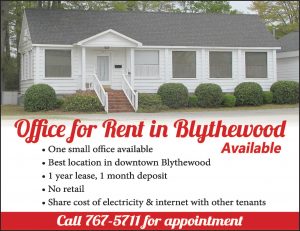Private alternative schools like The Barclay School, which operated for more than a decade in Fairfield County before closing at the end of February due to funding challenges, are a testament to the unmet need in special education.
The tiny little school in Ridgeway, which ran on a shoestring budget with the help of volunteers and a ton of community love and support, did phenomenal work in educating children who had simply fallen through the cracks in public schools.
The closure of this school is downright tragic – and, unfortunately, it’s a tragedy that’s been repeated in a lot of communities; in rural communities especially. It’s hard to find the resources needed to provide the education that these kids need.
That said, there’s no need to point fingers for all the complex issues that led to the current challenges in special education; there’s not a clear person or institution to blame. But the reality is that the current model of special education in public schools isn’t working for special needs kids.
Special education has unique challenges. To provide it well requires not only special resources but also a special level of compassionate understanding.
Providing an appropriate education to special needs students in public schools adds another challenge: not only do the kids often need individualized help and attention to learn basic skills, but schools and educators are under pressure to meet standardized goals that may not be practical for all students.
This can result in a situation of skewed priorities, where dedicated teachers are not measured by their ability to make a difference in the lives of kids and prepare them for independent life as adults, but instead by measurements that are largely meaningless in this context.
What’s at stake for many children in this vulnerable population is significant: Will they grow up to be productive members of society – workers, taxpayers, productive members of the community – or will they be left in a position that causes them to get caught up in the welfare system, criminal justice system or worse, costing society money instead of living up to their potential?
The current system has two very real positives: A public school system with the resources and mandate to educate these kids and gifted educators from schools like Barclay, who’ve accomplished great things with these kids. Why not combine these two things and build a new paradigm?
I would propose this paradigm shift: Why not consider setting up an independent special needs school within every school system in South Carolina?
Use the funding that already exists for special education, but simply change the model of how it is applied. Provide the same administrative support provided to all public schools, but otherwise go hands-off: no bureaucratic regulations, no testing.
Provide existing special needs teachers with training on the holistic model, and then give them the freedom to manage the day-to-day ‘instruction’ independently, without interference from the central office.
With the help of experts and educators, like the Barclay School’s Gillian Barclay who’ve proven a successful model, let them develop their own curricula and ways to demonstrate the students’ academic growth in ways that make sense.
Educators like those at The Barclay School – some of whom overcame learning disabilities themselves to obtain higher education and now teach others – can do great things in an environment where they have the support they need to focus on the kids,
The success of school choice in South Carolina is a testament to the kind of positive growth that can occur when new models are tried – and it’s time for the public school system to get in on the benefits of innovation and change.
There are many proven successes to draw upon at places like The Barclay School, There’s no reason why the public school system can’t also become a driver in implementing new models – and special needs education is an important place to start.











